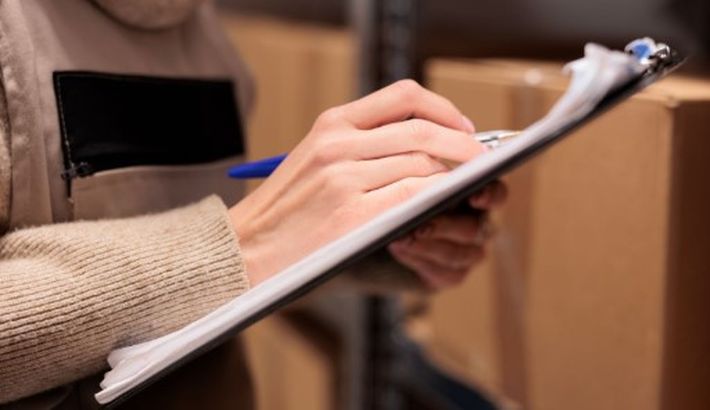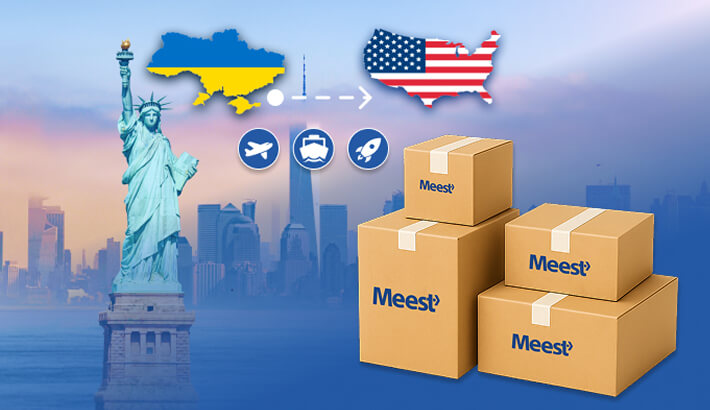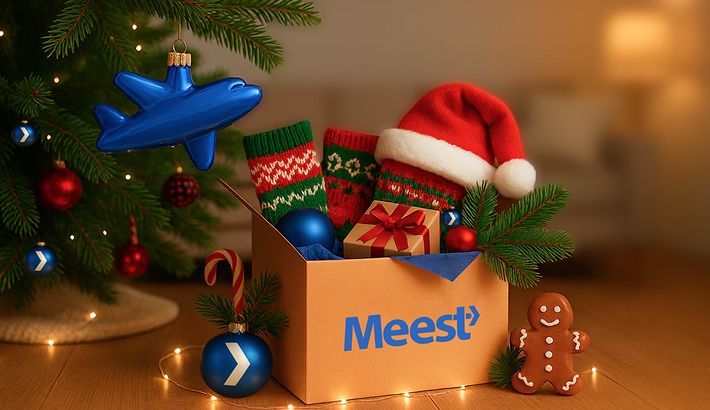


A Step-by-Step Guide to Filling Out Customs Form CN22/CN23
International shipping is a great way to show someone abroad that you care by sending them a gift, or grow your small business by branching out overseas. Yet, sending a parcel is more than just leaving a box at the local post office. You need to prepare documentation and be ready to work with customs for a successful delivery. Customs declaration forms CN22 and CN23 are most commonly used during international shipping.
Under the Universal Postal Union (UPU) postal system, these forms are required during customs clearance to show what you have in the parcel, the value of the items, where they come from, and if they are allowed to cross the border. And if your customs forms are incomplete or have errors, your package is most likely to be held back, inspected, or even returned.
This guide will help you choose between the customs declaration form CN22 and CN23, and explain how to fill out each one.
CN22 vs. CN23: Which Form Do I Need?
Although the two documents are extremely similar and both are often used to accompany international shipments, you have to understand which one you need to attach to your parcel. Let’s find out the main differences below.
The Core Difference
The main distinction between the two forms is how much detail you’re sharing with the customs office. They also vary in the threshold of the items you’re sending. For instance, CN22 is more suitable for lighter, low-value goods, while CN23 applies to heavier, high-value items. The former doesn’t require that much information to complete, and the latter is extremely detailed.
It’s important to note that the value threshold is set in Special Drawing Rights (SDR) — a special monetary unit used internationally.
When to Use a CN22 Form
If you are an individual sending a package abroad, you can use a CN22 form when shipping low-value packages. The average threshold is around $350 or the local equivalent, but it can change from country to country. The items should weigh 2 kg or less.
Basically, if you are sending small presents, simple goods, or typical items, you can go for the less detailed customs declaration form.
When to Use a CN23 Form
When the package’s value is more than $500 or its weight is more than 2 kg, you should fill out the CN23 form. E-commerce business owners dealing with commercial shipments are also required to attach a more detailed form. In most postal systems, CN23 is essential for certain categories of items. So, you should contact your local postal service or a courier service like Meest to ask which one is more suitable.
A Field-by-Field Guide to Filling Out the CN22 Form
Local versions of the CN22 customs form can vary, but the guide below explains the main fields you should fill out. Avoid leaving them empty, or your parcel delivery may be delayed.
Section 1: Type of Contents
At the top of the form, you will find several categories of items you can choose from. They often include:
- gift;
- documents;
- commercial sample;
- sale of goods.
Leave a tick in the box that suits your item description most. For example, if you have a secondhand goods store and want to import what you sold, it’s best to choose “sale of goods”. In case none are applicable, choose “other” and describe the items in the next section.
Section 2: Detailed Description of Contents
In this section, you have to describe exactly what you’re sending abroad. Be precise and accurate. For instance, when your package contains men’s jeans, write: “Men’s jeans, size M, in color black”. Avoid vague and short descriptions. Do not write “presents, clothes, pants”, and state everything you know about the item. For used items, state that they are not new.
Section 3: Quantity, Weight, and Value
Now, you have to write down the quantity, weight, and value of each item you have described above. Check the correct sale values for new items and avoid undervaluing. While it seems like a smart tactic to save on customs fees, it can lead to penalties.
Section 4: HS Tariff Number and Country of Origin
In some cases, your CN22 form may include the HS (Harmonized System) tariff number. Use online tools to determine which one suits your items and include it when needed. Additionally, write down the country of origin — where the item was made. These fields help customs officers decide the duties to be paid.
Section 5: Total Weight and Total Value
Add up the weight and then the value of each item, and note the numbers in the corresponding fields. This number determines the total weight and value of the parcel. Some carriers will also ask for the shipping and insurance costs.
Section 6: Signature and Date
Lastly, you have to sign the form and write the date. Your signature certifies that all the information in the form is truthful and accurate, and can be presented to the customs representatives. Some local form variants will also ask you for your phone number or email.
The CN22 form is then printed out and attached to the parcel in a transparent sleeve next to the shipping label, where customs will see it. That completes the CN22 filling-out process.
A Field-by-Field Guide to Filling Out the CN23 Form
A huge difference between the CN22 and CN23 forms is that the latter is more detailed. We will guide you through every section.
Sender's and Recipient's Details
At the top of the CN23 form, you will see a section for personal details. Fill out your full name, address, and country as the sender. Then, ask the recipient for their full name, address, and country, and write that down. Add phone numbers and emails, if applicable, for further contact with the customs representatives. E-commerce businesses are often asked to note down their EORI number or customs ID.
Detailed Description of Contents
Similar to the CN22 customs declaration form, this one requires details about the goods. So, write down the type of merchandise and its characteristics in clear, easy-to-understand terms. Do not use vague descriptions and write in English or any other acceptable local language.
Quantity, Weight, and Value Columns
Next, you have to state more information about the items. Fill out:
- how many units you’re shipping;
- how much each item weighs;
- value of each item in the relevant currency.
Some forms also ask for information about the additional costs, such as shipping and insurance.
HS Tariff Number and Country of Origin
HS tariff codes are a vital part of the CN23 customs declaration form. Paired with the country of origin, they allow customs to classify the items accurately and apply suitable duties. More often than not, these are mandatory for international shipments. If this information is missing, shipment may be delayed.
Category of Item / Comments / License / Certificate / Invoice Number
In CN23, you will also find other fields to state the category of item you’re sending, such as a sale or a gift, and comments, where you can state special conditions for delivering or storing the parcel.
Shipping regulated goods like medicine, chemicals, and agricultural products should also be accompanied by a specific license or a certificate number. Moreover, provide invoices for any commercial shipments, if applicable.
Sender's Declaration
The bottom of the CN23 form usually ends with the sender’s declaration, where you tick a checkbox to ensure that everything you’ve written is true. Write a statement that there are no prohibited items, and leave a date and your signature. A printed full name is required. Some forms also ask for the location where you’re exporting the parcel.
Just like CN22, CN23 should be placed in a transparent sleeve or pouch and attached to the parcel. Ensure that the customs can easily find it.
Best Practices and Common Mistakes to Avoid
When filling out your customs forms, use clear writing: either write in block letters or type out all the information before printing it. Modern carriers like Meest offer online forms you can fill out on the website and send through the Electronic Advance Data (EAD) system.
Furthermore, always state truthful and accurate information in the forms. Lying about the contents or undervaluing the items can lead to fines and even confiscation. Where possible, include HS codes and the country of origin to help customs classify your parcel.
If you are an e-commerce business owner, attach all supporting documents to your international shipment. That encompasses invoices, certificates, and licenses. All the documentation and forms should be attached visibly and securely to the package. Remember to keep copies or photos of the documentation in case you need to settle disputes. It’s best not to:
- use incorrect or vague descriptions of the items;
- use CN22 when you need CN23, and vice versa;
- leave HS codes blank where they are required;
- undervalue the items;
- leave out contact information for the sender or the recipient.
These common mistakes can lead to late delivery, customs rejections, and potential returns to the sender.
Conclusion
International shipping is a perfect opportunity to send gifts to someone abroad or grow your customer base. Yet, you should know how to manage customs when sending parcels to another country. Filling out customs forms is the main part of the process. Both CN22 and CN23 are used for international shipping, but the one you choose depends on the value and weight of your items.
By filling out the fields correctly and providing accurate information, you can be confident that your items pass customs clearance and reach their destination.

















